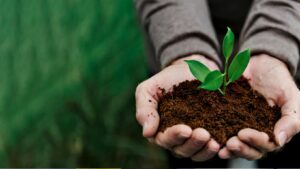
In an era where environmental awareness is more than a trend, self-sustainable living has emerged as a key lifestyle choice for those looking to reduce their carbon footprint and embrace a more eco-friendly existence. This approach to life isn’t just about being green; it’s a comprehensive shift towards self-reliance, minimalism, and a profound respect for the planet’s resources. From growing their own food to harnessing solar energy, individuals around the globe are finding innovative ways to live sustainably.
Self Sustainable Living
 Self sustainable living refers to a lifestyle that minimizes waste and reliance on the grid, focusing instead on generating one’s own resources. Individuals embrace practices such as cultivating homegrown vegetables and fruits, harnessing solar power for electricity, and collecting rainwater for household use. This approach not only contributes to a smaller environmental footprint but also fosters a deeper connection to the natural world. Technological advancements have made solar panels, composting toilets, and water purification systems more accessible, simplifying the transition for many. Furthermore, the self sustainable living community offers a wealth of knowledge, sharing insights on efficient home design, permaculture, and waste reduction. These practices, rooted in self-reliance and eco-consciousness, signify a comprehensive way of life that advocates for sustainability and ecological respect.
Self sustainable living refers to a lifestyle that minimizes waste and reliance on the grid, focusing instead on generating one’s own resources. Individuals embrace practices such as cultivating homegrown vegetables and fruits, harnessing solar power for electricity, and collecting rainwater for household use. This approach not only contributes to a smaller environmental footprint but also fosters a deeper connection to the natural world. Technological advancements have made solar panels, composting toilets, and water purification systems more accessible, simplifying the transition for many. Furthermore, the self sustainable living community offers a wealth of knowledge, sharing insights on efficient home design, permaculture, and waste reduction. These practices, rooted in self-reliance and eco-consciousness, signify a comprehensive way of life that advocates for sustainability and ecological respect.
Key Elements of Self Sustainable Living
Self-sustainable living hinges on several key elements that contribute to minimizing environmental impact while promoting a lifestyle of self-reliance and ecological respect.
Renewable Energy Sources
Adopting renewable energy sources, like solar panels and wind turbines, plays a vital role. These technologies harness natural resources to generate power, reducing reliance on non-renewable energy and lowering carbon emissions.
Water Conservation and Management
Effective water conservation and management, through rainwater harvesting and the use of greywater systems, are crucial. These practices not only reduce water consumption but also ensure a sustainable supply for agricultural and personal use.
Sustainable Agriculture
Practicing sustainable agriculture by cultivating homegrown produce and utilizing permaculture principles leads to a reduced carbon footprint. It supports biodiversity and soil health, fostering a closer connection to nature.
Waste Reduction and Recycling
 Minimizing waste through recycling, composting, and conscious consumption is essential. It decreases the amount of waste sent to landfills and promotes a circular economy where resources are reused and recycled.
Minimizing waste through recycling, composting, and conscious consumption is essential. It decreases the amount of waste sent to landfills and promotes a circular economy where resources are reused and recycled.
By integrating these elements into daily life, individuals embarking on a self-sustainable living journey can significantly contribute to environmental conservation and a healthier planet.
Challenges to Achieving Self-Sufficiency
Achieving self-sufficiency presents several challenges, ranging from financial constraints to logistical hurdles. Individuals often encounter these obstacles at the onset of their journey towards a self-sustainable lifestyle.
Financial Constraints
Investing in renewable energy systems and sustainable agriculture requires significant upfront costs. Solar panels, wind turbines, and rainwater harvesting systems demand a considerable initial investment before they yield savings or become profitable. For many, these financial requirements can deter the transition to self-sufficiency.
Knowledge and Skills Gap
A successful self-sufficient lifestyle necessitates a wide range of skills and knowledge in areas such as agriculture, renewable energy, and waste management. Acquiring these skills often involves time and resources that individuals may not readily have. The gap between existing capabilities and the required expertise poses a significant challenge.
Regulatory and Legal Barriers
Local regulations and zoning laws can restrict certain self-sufficient practices, such as the installation of solar panels or the construction of rainwater harvesting systems. Navigating these legal frameworks and securing the necessary permits can be a daunting task, delaying or even halting efforts towards self-sufficiency.
Access to Resources
Finally, access to land and water, essential components of self-sufficiency, can be limited, especially in urban areas. Finding suitable space for gardens or renewable energy installations often proves challenging, constraining individuals’ ability to fully embrace a self-sustainable lifestyle.
